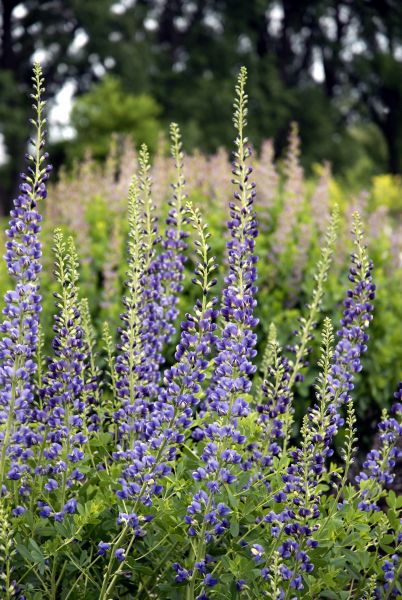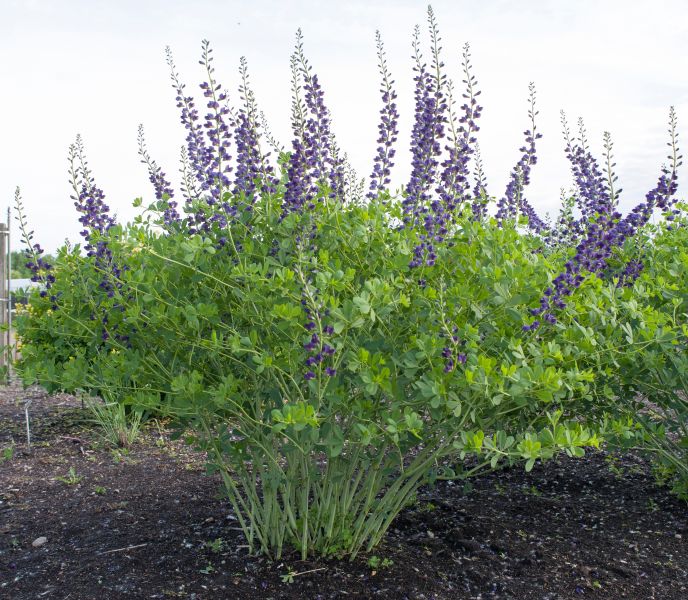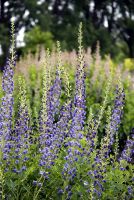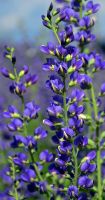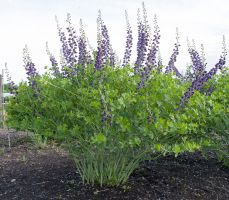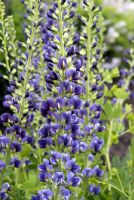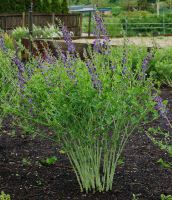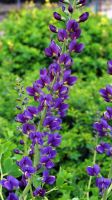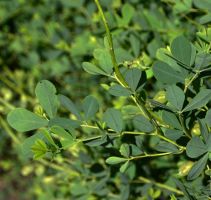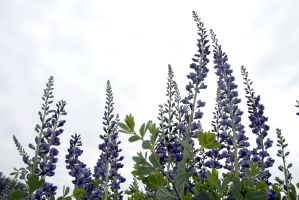Baptisia Midnite
Almost black flowers.
The dark violet-blue flowers are borne in profusion on the 24-inch-long primary inflorescences. The shorter secondary inflorescences come into bloom as the primary inflorescences are finishing up, extending this selection’s bloom season to three to four weeks, longer than most Baptisia. The fine- textured foliage remains an attractive green all season until the first hard freeze of autumn. This striking plant makes an excellent specimen but is also effective massed at the back of a perennial border. Can be an outstanding addition to a mixed border or grouped for a naturalistic effect in prairie or meadow settings. Its durability lends it to low-maintenance landscapes. The upright stems and their lack of lowermost foliage make ‘Midnite’ suitable for planting close to other plants in the landscape, unlike some false indigos such as B. australis.
Who Am I?
-
Common Name:Midnite false indigo
-
Botanical Name:Baptisia 'Midnite' PP20432
-
Type:Perennial
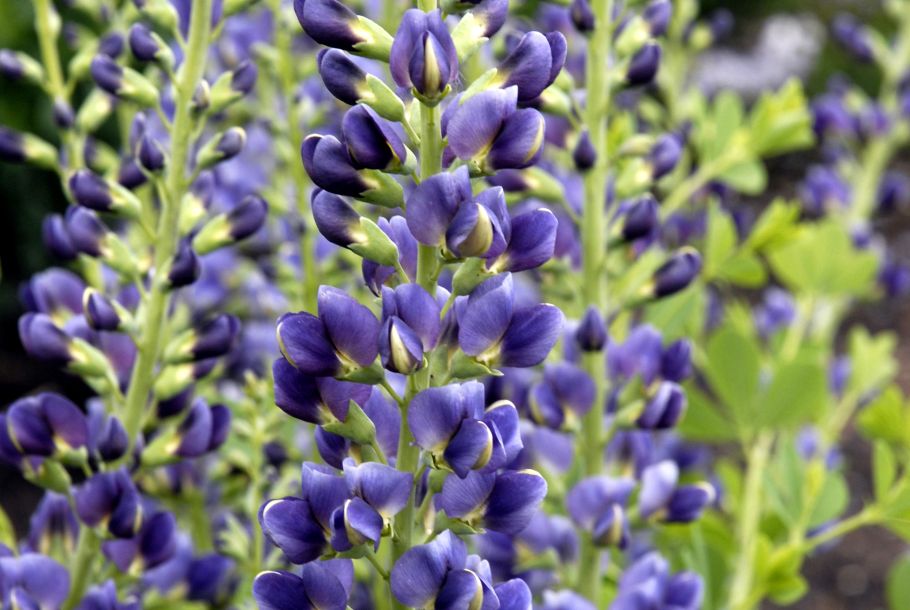
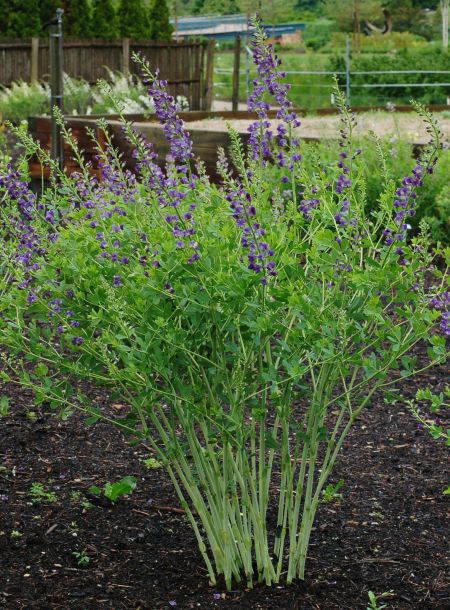
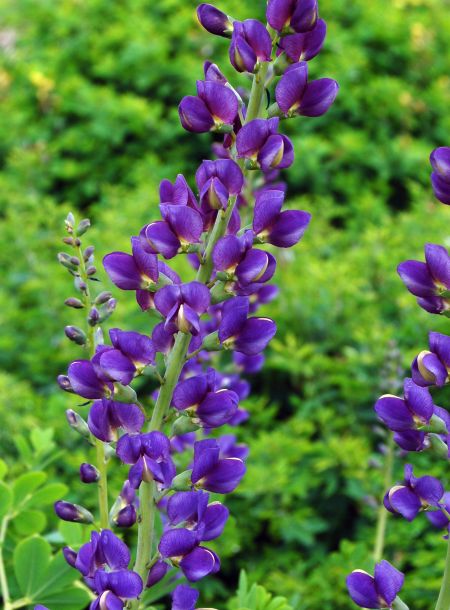
Cultural Details
TYPE
-
Light:Full sun
-
Soil:Moist, but well-drained, fairly adaptable to many soils
-
Moisture:Drought tolerant once established
-
Hardiness Zone4-9
-
Bloom Time:Late spring/early summer
-
Bloom Color:Deep pueple
-
Fruit TimeFall
-
Fruit ColorGray
-
Size:4' tall by 4' wide
-
Diseases & Pests:False indigos exhibit good to excellent disease resistance. A seed weevil will predate the seed, but this does not detract from either plant health or display value. The genista broom moth caterpillar (Uresiphita reversalis) can seriously defoliate plants of Baptisia, but this tends to be more of a problem in warmer climes.
What Makes Me Special?
Landscape Use
Origin
The Prairieblues™ false indigos were developed by Jim Ault, Ph.D., at the Chicago Botanic Garden from crosses made between 1999 and 2004. The selections were developed from crossing Baptisia albescens (formerly B. alba), B. australis var. australis, B. australis var. minor, B. bracteata (formerly B. leucophaea), B. sphaerocarpa, and B. tinctoria in various c ombinations. All parent plants and selections were grown in-ground at the Chicago Botanic Garden (USDA Zone 5b) during the breeding and selection process.
